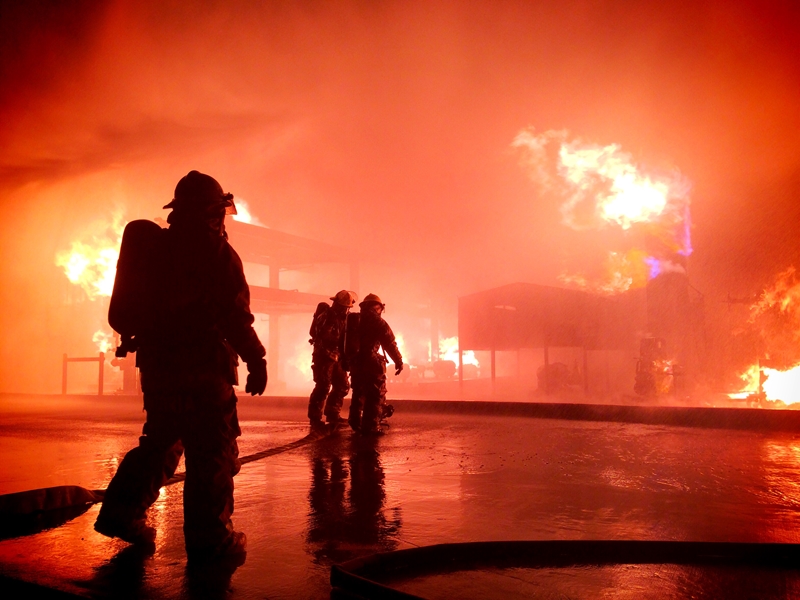In 2009, the International Code Council (ICC) and the National Fire Protection Association (NFPA) implemented first-responder radio coverage requirements to their respective books of fire codes. The intent of the codes is to ensure that firefighters, police, EMTs and other emergency responders will be able to communicate from within any structure, uninhibited by in-building signal loss. As part of those requirements, contractors must ensure that emergency responder radio coverage exists in new constructions and heavily renovated buildings. If emergency responder radio is not adequate, bi-directional amplifier’s (BDA) or distributed antenna systems (DAS) must then be installed to boost coverage in these buildings.
However, beyond that initial installation, the onus falls on property owners or building managers to show proof of BDA/DAS re-certification, as directed under 510.6.1 of the ICC code, “Testing and proof of compliance,” and NFPA 1221 11.13.9, “Test and Inspection of In-Building Two-Way Radio Enhancement Systems.” This sounds simple enough in theory, but it can prove complicated in practice.
A Recent Regulation
Enforcement of ICC/NFPA regulations has just begun within the past three to five years, and only in some municipalities. As a result, many building managers are suddenly receiving notices from fire marshals about annual BDA/DAS system re-certification, or what NFPA refers to as “acceptance testing.” Often, these managers don’t know the requirements, or for that matter, who to call for help in ensuring that their property is compliant.
For the sake of shedding some light on these recently implemented enforcement standards, below are explanations for the “what,” the “why,” the “how,” and the “who” of BDA/DAS re-certification.
The ‘What’
The ICC/NFPA mandate that all emergency coverage radio systems receive inspection on an annual basis, and when any additions or structural changes are made to buildings that, as the ICC worded it, “materially change the original field performance tests.” The purpose is to make sure that signal readings and other BDA/DAS manufacturer specifications have not changed or degraded.
In the past, not all municipalities abided by the ICC/NFPA requirements, and many cities created loose iterations of it – for instance, that recertification needed to happen once every five years. However, local governments are now starting to adhere more rigidly to ICC/NFPA standards. In addition to the requirements mentioned above, municipalities are now asking buildings owners to annually prove:
- Acceptance test procedures are upheld.
- Backup power or batteries can support communication for up to a complete hour.
The ‘Why’
From an enforcement perspective, the risk of non-compliance can range from fines to, more drastically, fire marshals informing building owners that fire departments cannot respond to certain calls.
The deeper and more meaningful reason for BDA/DAS re-certification is to ensure that first responders have the communication capabilities they need to help people within a building in an emergency situation. Consider this haunting example:
In the minutes following the collapse of the South Tower of the World Trade Center on 9/11, a police helicopter radioed out that the second tower was also in danger. “I don’t think this has too much longer to go. I would evacuate all people within the area of that second building,” he said, according to the New York Times. Unfortunately, most firefighters never heard that warning, and neither did many police officers responding to the attacks, because the radio system had failed. Twenty-one minutes later, the building collapsed.
In a more common scenario, a signal booster that is not functioning properly may cause interference on the local public safety radio network, causing the entire network to be compromised.
Needless to say, building managers are highly encouraged and, in an increasing number of cities and towns, required to prove BDA/DAS re-certification on an annual basis to avoid similar catastrophic communication failures, beyond noncompliance penalties.
The ‘How’
Property owners typically have no connection to the original BDA/DAS manufacturer, or for that matter, the construction company or subcontractor that installed the equipment. The result: building managers literally left to their own devices.
However, the BDA/DAS re-certification process doesn’t have to be conducted by the original equipment manufacturer or installer. Any FCC-qualified technician with the appropriate BDA/DAS manufacturer certifications can handle monitoring and ongoing maintenance of a system. Taking this route eliminates the need to chase a paper trail.
During the actual re-certification process, the technician will conduct a coverage test, make sure the amplifier and battery backup system function properly and provide the required documentation for proof of compliance.
For the intents and purposes of a building manager trying to be compliant with local fire code enforcement, the most effective course of action is to contact a trustworthy name in the industry.
The ‘Who’
Day Wireless Systems is one of the most widely recognized experts in the in-building wireless communication industry. Since 1969, Day’s main objective has been to supply and implement reliable emergency responder wireless communication systems, and to service existing systems, regardless of the manufacturer or installation contractor.
When it comes to BDA/DAS re-certification, property owners may not need a brand new installation. However, as municipalities continue to adopt ICC/NFPA regulations, they will need knowledgeable technicians who can perform the required inspection and, if necessary, provide actionable steps for customers whose systems are not up to specifications. DWS provides both of those services, and much more.
Re-certification of critical communication systems is extraordinarily important, but that doesn’t mean it has to be unexpected or complicated. Contact DWS today to get ahead of ICC/NFPA emergency responder radio coverage requirements.
